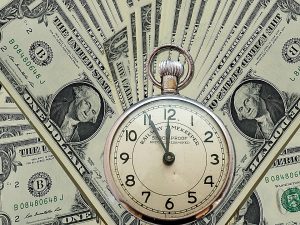Fixed vs Variable Expenses: What’s the Difference?
 Whether you’re a small business owner or professional accountant, you’re bound to come across some rather confusing terms regarding bookkeeping. While most people are familiar with “expenses,” there are several associated terms that can be somewhat confusing, such as “fixed expenses” and “variable expenses.” So, what exactly do these terms mean?
Whether you’re a small business owner or professional accountant, you’re bound to come across some rather confusing terms regarding bookkeeping. While most people are familiar with “expenses,” there are several associated terms that can be somewhat confusing, such as “fixed expenses” and “variable expenses.” So, what exactly do these terms mean?
A fixed expense lives up to its namesake in the sense that it’s static and does not change. If you are billed a flat $100 each month for an enterprise-based telephone service, for instance, this is considered a fixed expense, simply because it’s the same amount every month.
Another example of a fixed expense for businesses is rent or lease. Unless you work out of your home, you probably pay a flat amount every month to rent, lease or otherwise use a building. Of course, these are just two of the many examples of fixed expenses. A typical small to mid-sized business (SMB) likely has more than a dozen different fixed expenses.
After reading the definition of a fixed expense above, you probably have a good idea of the definition of a variable expense. While fixed expenses remain the same from month to month (or any interval), variable expenses are subject to change. From a consumer’s standpoint, variable expenses may include the cost of eating out, buying clothes, going to the movies, or even cellphone usage. Granted, there’s a chance that variable expenses such as these will be the same, this typically does not happen. Instead, the variable expense differs from month to month.
Small business owners should focus on reducing both their fixed and variable expenses to maximize their net revenue. Regardless of the business’s niche or industry, there are ways to reduce both fixed and variable expenses. One of the easiest and most effective ways to reduce variable expenses, for instance, is to evaluate your utilities. You can’t necessarily cut off your utilities, but you can probably lower the cost by implementing some energy-efficient practices in your business.
For fixed expenses, business owners can look towards alternative providers. Using the example mentioned above, if you are currently paying $100 for a business phone line, perhaps you can shop around to see if other telecommunications companies are offering a similar service for less. With a little bit of luck, you can score the same or similar service for less; thus, reducing one of your fixed expenses.
Have anything else that you would like to add? Let us know in the comments section below!
